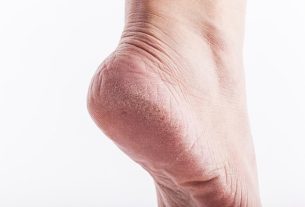To know your skin type, it is important to take into account some characteristics such as sensitivity, skin age, pigmentation, oiliness and tendency to form wrinkles, which can be assessed through visual, tactile examinations or through specific devices used by a doctor. dermatologist.
Thus, according to the characteristics, skin can be classified as normal, dry, oily, combination, sensitive, resistant and/or pigmented.
Skin type is influenced by genetic, environmental and lifestyle factors and, therefore, by changing some behaviors it is possible to improve skin health, making it more hydrated, nourished, luminous and younger-looking. To do this, it is important to know your skin type well, in order to make better decisions regarding the choice of daily care.

Skin types
Skin can be classified into some skin types according to its characteristics:
- Normal skin, which is one that does not have an oily or dry appearance, has a moderate shine, is luminous, pink, and is normally smooth and firm to the touch, without imperfections. The pores are generally imperceptible to the naked eye and there are generally no pimples;
- Dry skinwhich can be characterized by the feeling that the skin is pulling after contact with water, in addition to being able to peel off more easily and lack shine;
- Oily skinin which there is greater production of sebum, which may lead to more enlarged pores and the formation of acne more frequently;
- First mistain which areas of the face with greater oiliness can be noticed, such as on the forehead, nose and chin, and drier areas, such as on the cheeks;
- Sensitive skin, which is the one that can most easily suffer from problems such as acne, rosacea, burning and allergic reactions, turning red more frequently, in addition to being more prone to peeling;
- Tough skinwhich has a healthy stratum corneum, protecting the skin against allergens and other irritants, as well as protecting it from water loss;
- Pigmented skinwhich is characterized by the presence of signs and spots on the skin.
Over time, skin type can change, because it can be influenced by exposure to the sun, stress, diet and climate. Therefore, it is important that daily care is adjusted to keep the skin always well hydrated and firm.
How to know your skin type
To know the skin type, it is important that the person is without makeup or any cosmetic product on their face, and it is also recommended that the assessment be carried out in an environment with direct light and without shadows. Some of the factors that should be taken into consideration when evaluating the skin are:
- Skin texture;
- Elasticity;
- Presence of enlarged pores;
- Redness of the skin;
- Areas on the face with more oil;
- Presence of acne;
- Areas with peeling;
- Presence of spots on the skin.
The skin type must be confirmed by a dermatologist or a properly trained aesthetics professional based on an assessment of the characteristics and specific tests that can be carried out.
Online skin type test
To find out your skin type, enter your characteristics into the calculator below:
How to care for each skin type
Skin care can vary according to the type, as there are specific soaps, sunscreens, creams and makeup for each skin type that help keep the skin hydrated and reduce or control skin oiliness.
1. Normal skin
To care for normal skin, neutral soaps and oil-free moisturizing creams should be used daily. Furthermore, sunscreen should be used daily on visible areas of the body, such as the face and hands, for example.
2. Oily skin
To care for oily skin, it is important to apply neutral cleansing lotions based on plant extracts of witch hazel, calendula, mint, camphor and menthol, for example, as they have properties that help reduce skin inflammation, controlling oiliness.
People with oily skin should avoid using makeup as it leads to clogging of the skin’s openings and encourages the formation of blackheads. Furthermore, as oily skin can occur due to excessive exposure to the sun, stress or as a consequence of a diet rich in fat, it is recommended to use sunscreen daily and have a healthier and more balanced diet, this way it is possible to control the oily skin. .
3. Dry skin
To care for dry skin, you should use moisturizing creams or vegetable oils, such as aloe vera or chamomile, for example, adding macadamia, almond or grape seed oil to effectively hydrate the skin. Furthermore, you should use alcohol-free products, as alcohol dries out your skin even more, making it rough.
As dry skin can also occur due to excessive cold or long baths with very hot water, it is important to hydrate the skin well and protect it from excessive cold and wind, in addition to taking baths with warmer or colder water, this way it is possible to avoid dry skin. dryness of the skin.
4. Before mista
Combination skin is the combination of dry skin and oily skin, with oiliness being observed in the “T zone”, which corresponds to the chin, nose and forehead, and greater dryness around the mouth, cheeks and eyes. In these cases, cleansing lotions should be used in the most oily area and moisturizing creams in the remaining area.
5. Sensitive skin
If it is confirmed that the person has more sensitive skin, it is recommended to use hypoallergenic cosmetic products that have calming and anti-inflammatory properties, such as products with chamomile, aloe vera and niacinamide, for example.
6. Pigmented skin
In the case of pigmented skin, it is important to follow the dermatologist’s recommendations to prevent the spots and/or moles from becoming darker over time. To achieve this, it is normally recommended to use whitening creams and sunscreen, which should be applied daily, even if the person is not directly exposed to the sun.

Sign up for our newsletter and stay up to date with exclusive news
that can transform your routine!
Warning: Undefined array key "title" in /home/storelat/public_html/wp-content/plugins/link-whisper-premium/templates/frontend/related-posts.php on line 12
Warning: Undefined array key "title_tag" in /home/storelat/public_html/wp-content/plugins/link-whisper-premium/templates/frontend/related-posts.php on line 13




